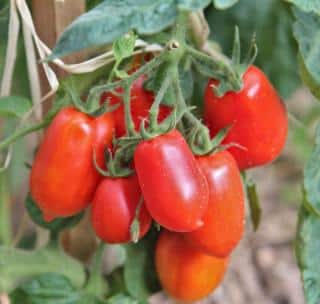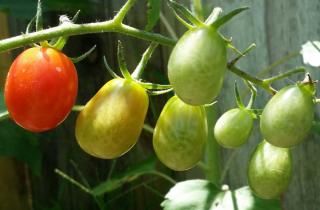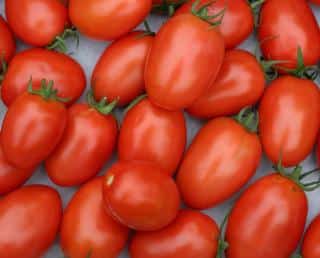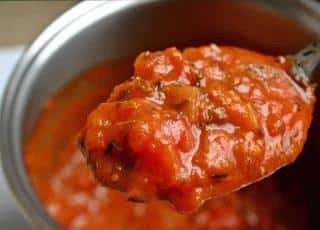

If you’re looking for a tomato with a strange shape, you’ll probably see the ‘Roma’ high up on that list! Great choice!
With its oblong shape and smooth skin, the ‘Roma’ is very easy to identify. And the cherry on the top is that it’s a vigorous and productive variety.
Surprisingly, the ‘Roma’ name is misleading: this tomato doesn’t come from Italy, it comes from the United States! It’s a variety that was developed in Maryland. It grows following a determinate growth pattern, and is known to be very productive. Fruits are an average size for a tomato, and its shape is longish and smooth. The tomatoes are meaty and have almost no seeds. The plant also appears under the name ‘Roma VF’. These two extra letters are in fact abbreviations for the names of two fungus: Fusarium and Verticillium. Indeed, the ‘Roma’ resists both of these diseases very well.
The Roma is a “plum tomato”, meaning it’s in a category of tomatoes that looks like plums because of its oval shape.
Sowing can be performed in March, April under protective cover. Spread the seeds in a mix of soil mix and sand. Once the seedlings have sprouted and produced two leaves, you can transplant them into nursery pots. Make sure to always protect them from the cold, as they await warmer outdoor temperatures.

Plants must be spread far apart enough that air circulates among them easily. Keep a planting distance of 20 to 24 inches (50 to 60 cm) between each one.
The ‘Roma’ tomato won’t need much attention. Water regularly, without drenching the soil nor wetting the leaves as this might favor diseases. Once fruits appear, you can defoliate part of the plant to let more sunlight hit the fruits: they’ll ripen faster. Only remove a few leaves here and there so you don’t weaken the plant too much.

It might occasionally fall victim to tiny flying insects called whitefly.
Another problematic pest is the bollworm caterpillar.

You’ll notice, though, that ‘Roma’ tomatoes are a bit different: they tend to all ripen together. It helps to know that you can keep them for nearly a week in the refrigerator.

Its flesh is firm and holds together under heat, making this tomato ideal for cooking, canning and baking.
To learn more, read: